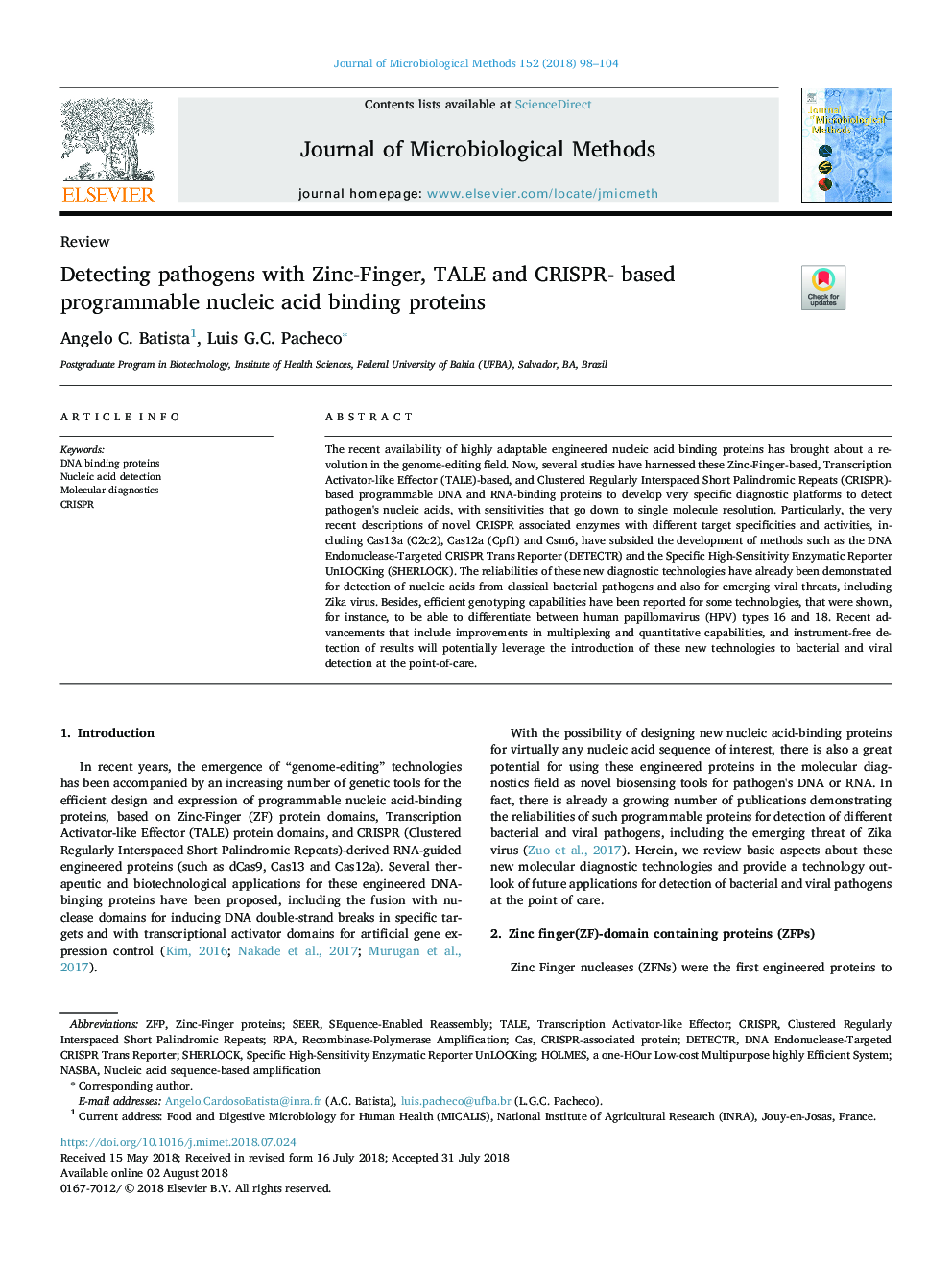| Article ID | Journal | Published Year | Pages | File Type |
|---|---|---|---|---|
| 8420268 | Journal of Microbiological Methods | 2018 | 7 Pages |
Abstract
The recent availability of highly adaptable engineered nucleic acid binding proteins has brought about a revolution in the genome-editing field. Now, several studies have harnessed these Zinc-Finger-based, Transcription Activator-like Effector (TALE)-based, and Clustered Regularly Interspaced Short Palindromic Repeats (CRISPR)-based programmable DNA and RNA-binding proteins to develop very specific diagnostic platforms to detect pathogen's nucleic acids, with sensitivities that go down to single molecule resolution. Particularly, the very recent descriptions of novel CRISPR associated enzymes with different target specificities and activities, including Cas13a (C2c2), Cas12a (Cpf1) and Csm6, have subsided the development of methods such as the DNA Endonuclease-Targeted CRISPR Trans Reporter (DETECTR) and the Specific High-Sensitivity Enzymatic Reporter UnLOCKing (SHERLOCK). The reliabilities of these new diagnostic technologies have already been demonstrated for detection of nucleic acids from classical bacterial pathogens and also for emerging viral threats, including Zika virus. Besides, efficient genotyping capabilities have been reported for some technologies, that were shown, for instance, to be able to differentiate between human papillomavirus (HPV) types 16 and 18. Recent advancements that include improvements in multiplexing and quantitative capabilities, and instrument-free detection of results will potentially leverage the introduction of these new technologies to bacterial and viral detection at the point-of-care.
Keywords
Related Topics
Life Sciences
Biochemistry, Genetics and Molecular Biology
Biotechnology
Authors
Angelo C. Batista, Luis G.C. Pacheco,
